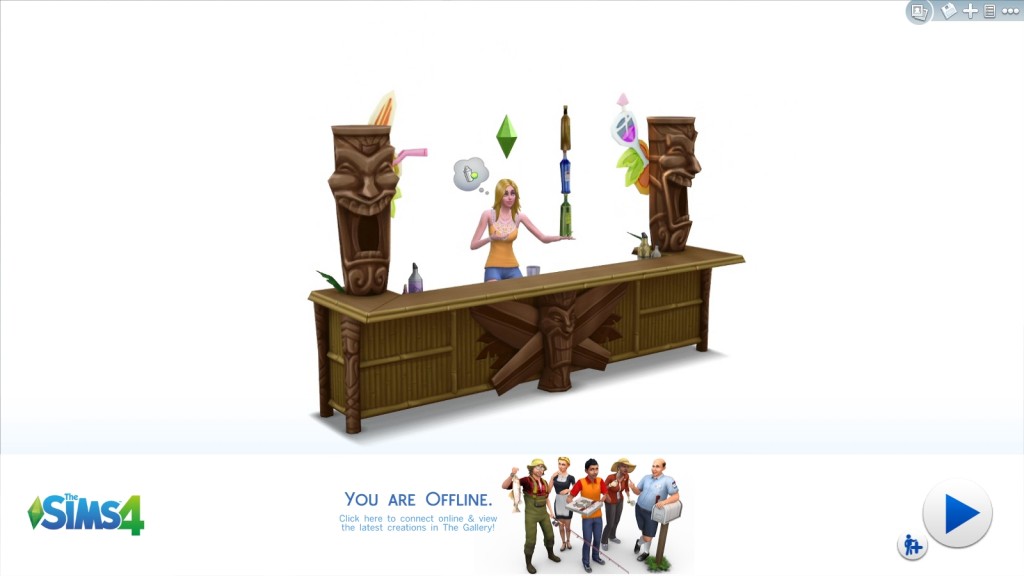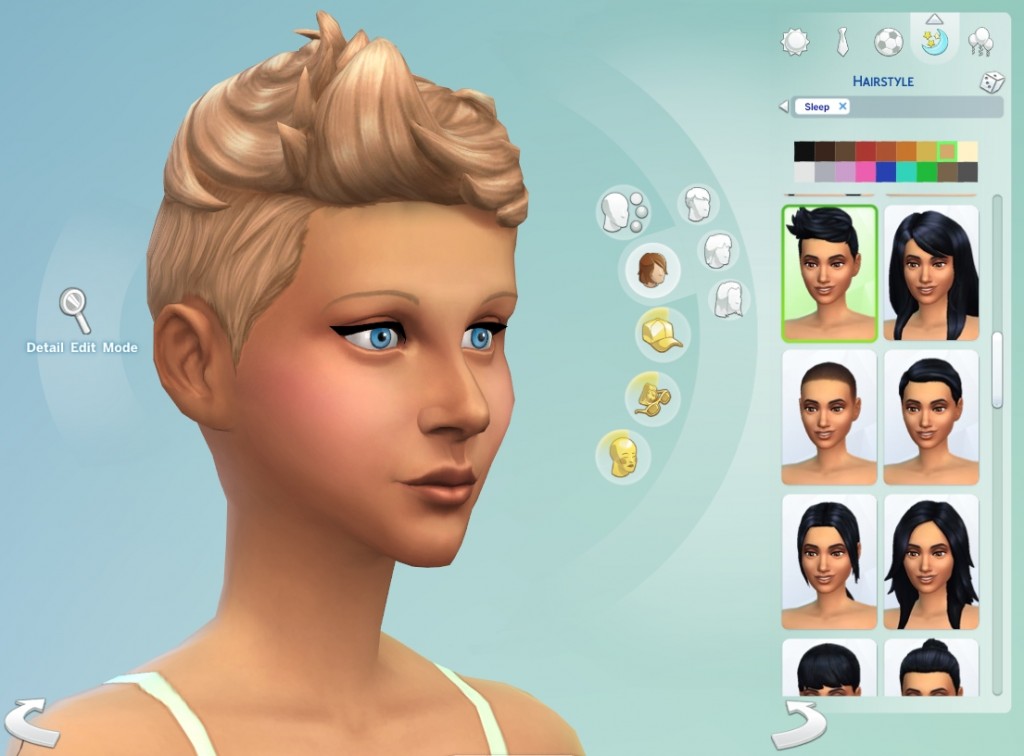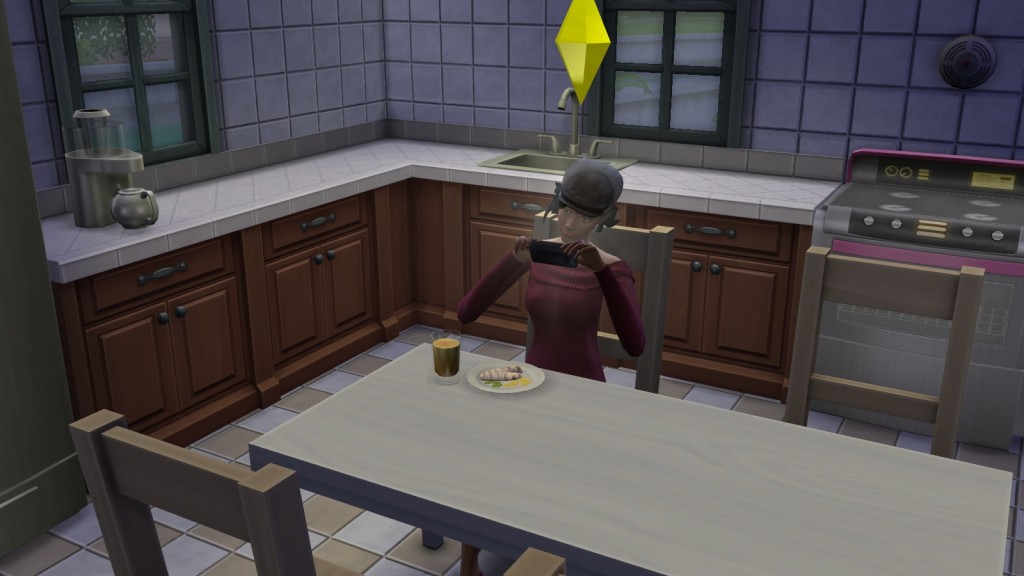Video Game Review: The Sims 4
Following all the hype, anticipation and backlash over the last couple years, The Sims 4 was just released last September 4, 2014, and with it came a lot more criticism, both positive and negative. As an avid Sims fan myself, I was quite excited for the release of a new installment of the series, despite all the negative criticism it has ensued after the announcement of its release. I finally got my hands on this game myself, and it’s quite a change from the earlier installments of The Sims franchise. Whether or not it’s ‘better’ or ‘worse’ than the previous titles in the series is debatable, and certainly a measure that is too subjective to be defined. Perhaps it would be easier to come to that conclusion if you’ve had first-hand experience with the game itself, but here’s my take on the game. From all that is in the game, to all that is ‘missing,’ so to speak, there’s a lot to talk about.
Perhaps one of the most obvious aspects, and probably one of the first people would critique, are the graphics. The game certainly strays from the more realistic art style of The Sims 3, and embraces a more comical and cartoony art style. Many question the direction that the artists chose, as it seems to go back to the days of The Sims 2, but I personally quite enjoy the new look of The Sims. I’ve always treated The Sims franchise as a comical imitation of real life, and the new art style really reflects that aspect of the game. I suppose many others would prefer the way their Sims looked in The Sims 3, and that’s all well and good. Personally, I found them a tad too realistic, in a sense that they induced an uncanny valley feeling that didn’t seem appropriate to me. The new look to the characters, as well as the environment, really helps with the overall cartoon-like mood of the game. It gives new life to the characters, and helps the exaggeration of their actions seem more appropriate to the game itself. The game certainly has distanced itself from the look of The Sims 3, and I think it’s an improvement! It adds to the new feel to the game, which in itself has in many ways evolved from the previous iterations of the series. Even those who miss the old art style of the games have to admit, the work they did with the new design is gorgeous! From the new scenery objects to perhaps the Sims themselves, the art team definitely hit a home run with their beautiful designs!
Getting into the game itself, I first took a look at the new Create a Sim (CAS) tool, which boasts to be new and innovative. It’s certainly more streamlined than the original slider system used in the previous two installments, and the new click-and-drag mechanic really gives a feeling of molding the Sims to exactly the shapes and sizes you want. I had a lot of fun just figuring out which parts of the Sims I could manipulate, stretching and contorting their noses, ears, lips, chins, thighs, hips and even their behinds! CAS also provides a wide variety of clothing and accessory options to clothe your Sims, as well as new hairstyles and hats to top off your creations. On the down side, the Create a Style (CASt) tool from The Sims 3 is missing from the game entirely, restricting players to use the preset color palettes and designs created by EA, or resort to custom content online. While this has turned off many players, EA has provided a wide variety of designs to choose from, so it’s not all bad. Overall the new click-and-drag aspect of CAS is both enjoyable and innovative. It allows for precision tweaking for all the little parts of a Sim’s body, and lets you finally create the Sim you imagined in your head, without tripping through the countless sliders that not everyone could get the hang of.
The other portion of CAS is giving your Sims their personalities. The first part of this is giving them their traits. The pool of available traits, at least in CAS, is very small compared to that of the last installment, and the limitation to 3 traits per adult Sim restricts choices further. Along with their traits, players are to choose the Sim’s aspirations, or goals in life. The progression of these aspirations gives the players some direction and motivation on what to have their Sims achieve next, and there are a considerable amount of choices. I enjoy the progression given by these goals; they ultimately provide a sense of achievement when you reach the milestones laid out for you. Yet another minor detail you’re given the freedom to change is the Sim’s walk styles. This is new to the game, and really, it’s there simply to add flavor to each individual Sim. That, along with the ability to control the pitch and tone of their voices, can further expand a Sim’s personality. In general, this portion of CAS might not be the most exciting, or the most amazing, but it does what it’s supposed to achieve. It could use a lot more expansion, especially with the choices for traits, though I’m certain that that will be expanded in the numerous expansion packs to be released for this game.
Gameplay-wise, the game sticks to its roots, building off the game’s core design. It is still The Sims, and plays just like it. I had no problem getting back into the feel of the game, from my previous experience with the series. An interesting new feature is the Sims’ ability to multitask, being that they’re able to carry out multiple actions at once, playing into the “Smarter Sims” idea. It helps quite a bit in fulfilling many of your Sims’ needs at once, and adds to the flavor of the game. The Sims feel more alive and much less like mindless automatons that are simply obeying every order given to them by the player. The new emotion-based gameplay also adds another layer of depth to the game, affecting your Sims’ mood, reactions and even the kinds of interactions they can perform with various objects and Sims. The emotions were entertaining, and give you new ways to approach a situation, depending on what your Sim is feeling, yet it always felt far too easy to manipulate their emotions to the one you want them to have at that moment. Ideally you’d have to work around a Sim’s depression or rage, but it’s all too simple to tell them to take a bubble bath and suddenly have them come out feeling playful. I had hoped with the emphasis they put upon this aspect of gameplay, it would have a greater impact on the game, yet once again it’s quite effortless to control the system altogether.
Missing from the game is Toddlers, an age group that existed between the Baby and Child stage, wherein the Toddlers were more interactive than babies. Now babies age straight into children, and the whole magic of teaching a toddler how to talk and walk and use the potty is gone. The change to the Teen age group is also quite odd, being that they look almost exactly the same as Adults, yet go to High School, take part-time jobs, and cannot “Woohoo”. Unlike The Sims 3, you’re restricted to wandering only a small neighborhood within the town, requiring loading screens to reach the other areas in a world. Even then, only one lot may be active at once, blocking entry into other homes without a loading screen to sit through. The loading times aren’t bad, so it’s not too unbearable. The rest of the Live Mode gameplay is generally an evolution of the previous games’ systems. Careers are new, though not very exciting. Rewards for completing whims are similar to that of the Lifetime Rewards in The Sims 3. It’s all built upon what we previously had, adding and removing various aspects of it.
For a rather large playerbase, Build Mode is the meat of the game. Developers gave a lot of focus to the new Building tools, and for good reason. They’re vastly streamlined and they are impressive for what they achieve. The developers seem to have a preference for their click-and-drag mechanics, as this is evident in the new Rooms tools. They feel very intuitive and smooth, making it easy to pull and stretch a room into the size you want. Foundations are easier than ever to place and modify; the new smart window placement removes the hassle of figuring out where each window should go; new wall heights make for more options for decor and can give buildings a more grand appearance. Even roofs are easy to place and customize; the new curved roofs look mighty fine when used right. An interesting new feature is the ability to resize an object to be larger than its original size. It’s a lot of fun to see how ridiculous a giant toilet will look on the town map. The lack of landscaping tools and pools is a major disappointment however. These two features are perhaps a staple of The Sims series, and they are missed very dearly. There are far less choices for furniture, and the lack of Create A Style makes their design options rather limited, making it quite difficult to create a home with a specific style and have everything match that style. Players are even required to unlock certain objects, usually from career milestones, narrowing choices even further until that objective is achieved. The objects themselves are well made, and have a quirkier feel to them, matching the overall mood of the rest of the game. There are a lot less functional objects however, and I was often left wondering what else I could use to fill up space within a room. Build mode is impressive for what it has to offer, but one is left feeling as though many features that should be present within it are missing.
There’s a lot more to the game than what I’ve covered, and I really only spoke of what probably left an impression on me. Overall, I think the game is different, and not necessarily better or worse than the previous titles. I do enjoy the game, being that it is what it advertises itself as, a Sims game. The many missing features are quite noticeable when you’re playing the game, and they make you want to go back to the old installments just to mess around with what this game is lacking. This isn’t necessarily a bad thing, as I find myself going back to The Sims 2, and even the original game from time to time, because they’re the same concept, but the games are drastically different in many ways. For the asking price of $70 however, perhaps it’s up to the individual to evaluate whether or not they’ll get their money’s worth in entertainment. It’s really up to the player how much they’ll enjoy the new experience of the game, being that it offers many different ways to enjoy the game. Fans of The Sims, like myself, will find that the game is definitely still The Sims in its core. It’s just a fresh new take on it, giving us new options on how to play, and innovating and enriching gameplay by introducing new aspects into the core formula.
The Sims isn’t a game for everyone. Not everyone will enjoy watching virtual people live out their everyday lives, going to work, having dinner and paying bills. But for those who do enjoy these kinds of games, The Sims 4 may be worth getting (perhaps when the price drops). I definitely enjoyed the game, giving me the same experience any other Sims game would, though in a different manner than the others. I recommend this game to those who will appreciate what the game has and is willing to overlook some of the flaws it may have. It’s refreshing to get a new installment of The Sims, and surely this one isn’t a (complete) disappointment! Maybe it is the ‘Smarter’ Sims, or the new and intuitive building tools, but the game has a lot of charm, coaxing you into spending just another little hour with your beloved little Sims. Happy Simming everyone!
Editor’s Note: As of November 4, pools are now available in The Sims 4 through a free update! 🙂






Comments